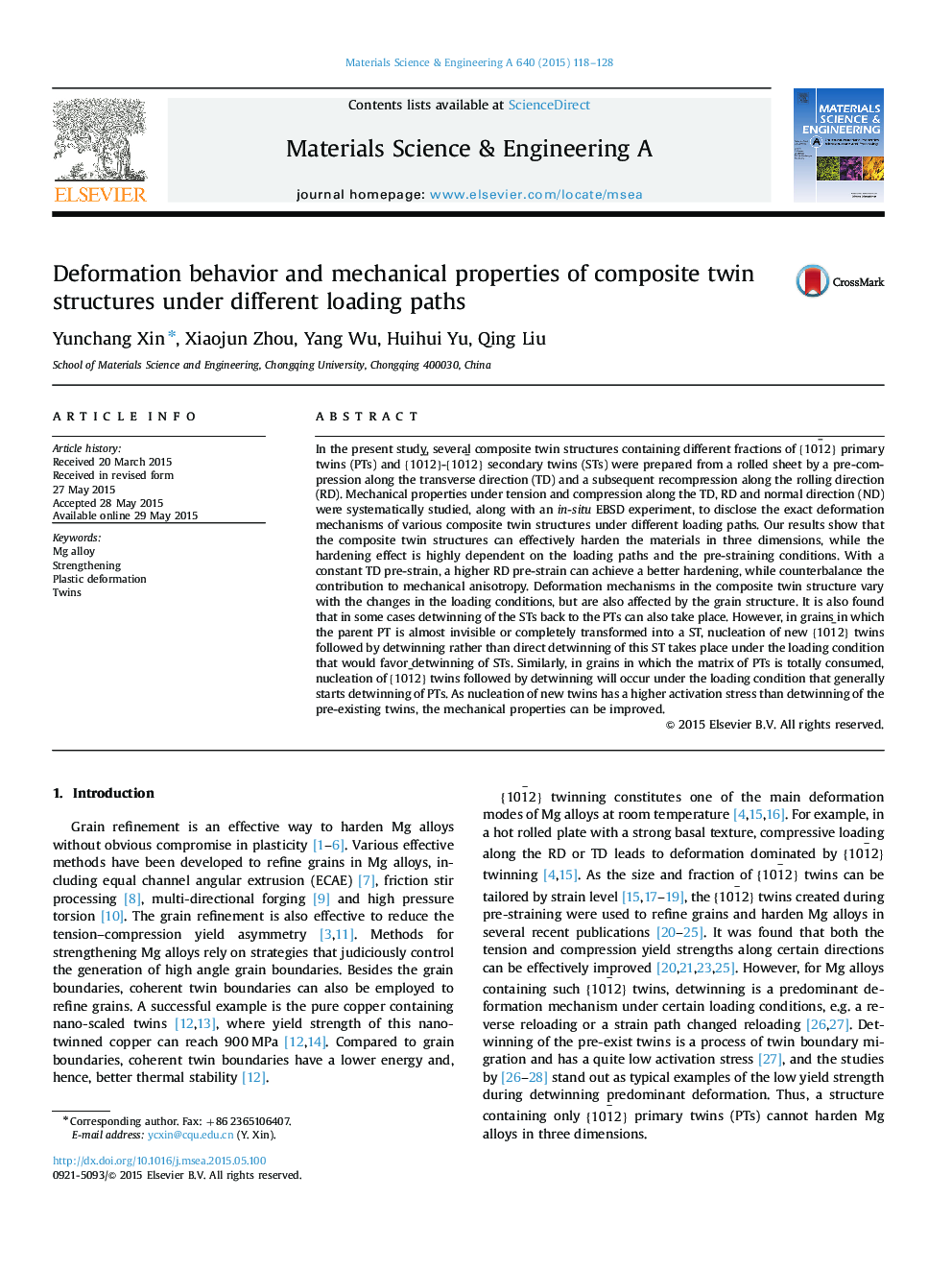| Article ID | Journal | Published Year | Pages | File Type |
|---|---|---|---|---|
| 1574010 | Materials Science and Engineering: A | 2015 | 11 Pages |
Abstract
In the present study, several composite twin structures containing different fractions of {101â2} primary twins (PTs) and {101â2}-{101â2} secondary twins (STs) were prepared from a rolled sheet by a pre-compression along the transverse direction (TD) and a subsequent recompression along the rolling direction (RD). Mechanical properties under tension and compression along the TD, RD and normal direction (ND) were systematically studied, along with an in-situ EBSD experiment, to disclose the exact deformation mechanisms of various composite twin structures under different loading paths. Our results show that the composite twin structures can effectively harden the materials in three dimensions, while the hardening effect is highly dependent on the loading paths and the pre-straining conditions. With a constant TD pre-strain, a higher RD pre-strain can achieve a better hardening, while counterbalance the contribution to mechanical anisotropy. Deformation mechanisms in the composite twin structure vary with the changes in the loading conditions, but are also affected by the grain structure. It is also found that in some cases detwinning of the STs back to the PTs can also take place. However, in grains in which the parent PT is almost invisible or completely transformed into a ST, nucleation of new {101â2} twins followed by detwinning rather than direct detwinning of this ST takes place under the loading condition that would favor detwinning of STs. Similarly, in grains in which the matrix of PTs is totally consumed, nucleation of {101â2} twins followed by detwinning will occur under the loading condition that generally starts detwinning of PTs. As nucleation of new twins has a higher activation stress than detwinning of the pre-existing twins, the mechanical properties can be improved.
Related Topics
Physical Sciences and Engineering
Materials Science
Materials Science (General)
Authors
Yunchang Xin, Xiaojun Zhou, Yang Wu, Huihui Yu, Qing Liu,
